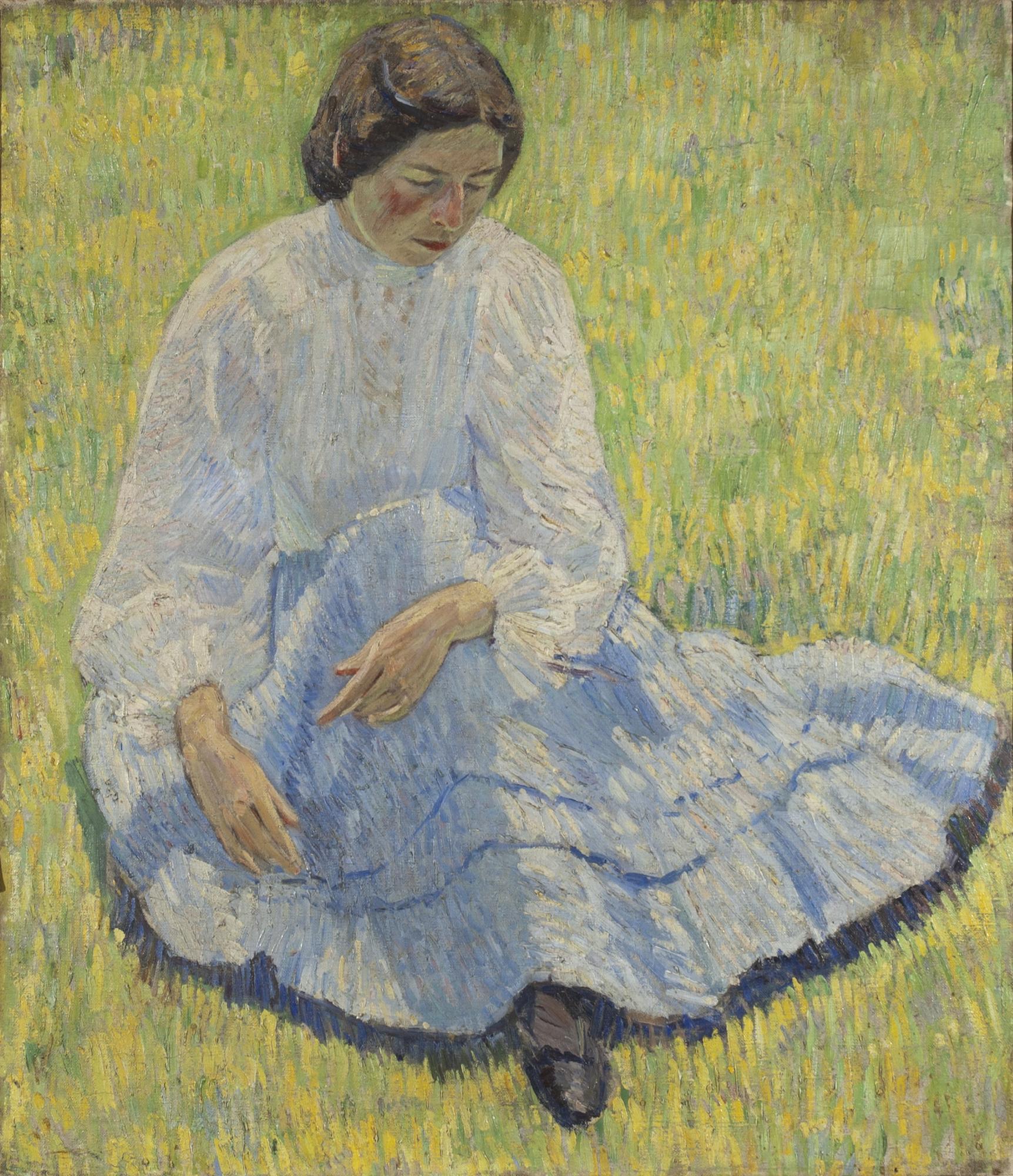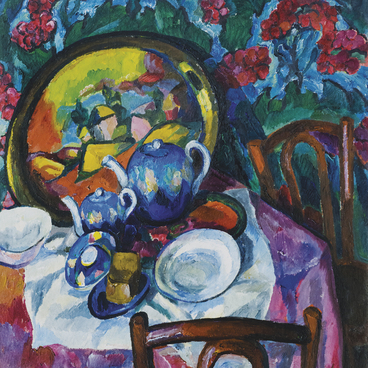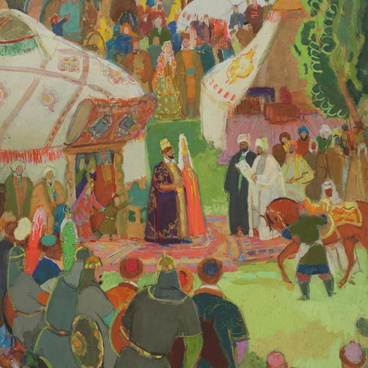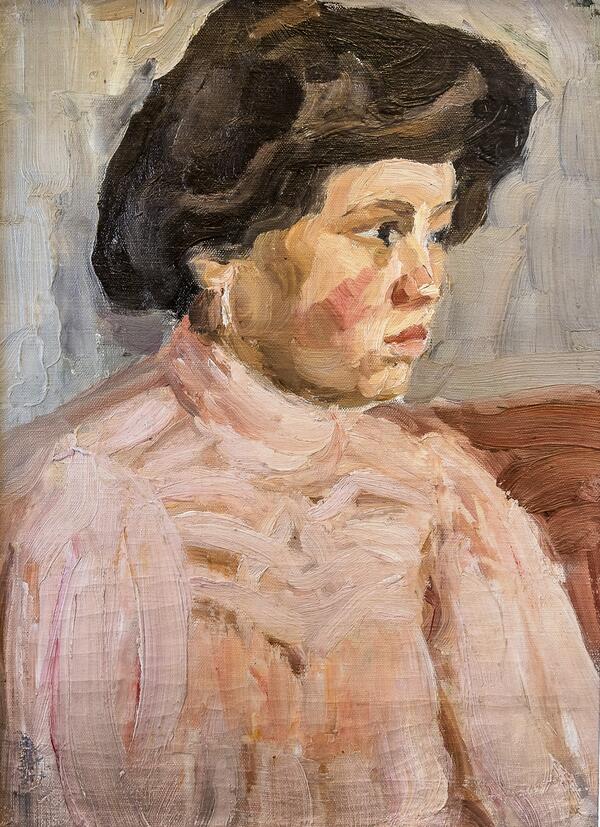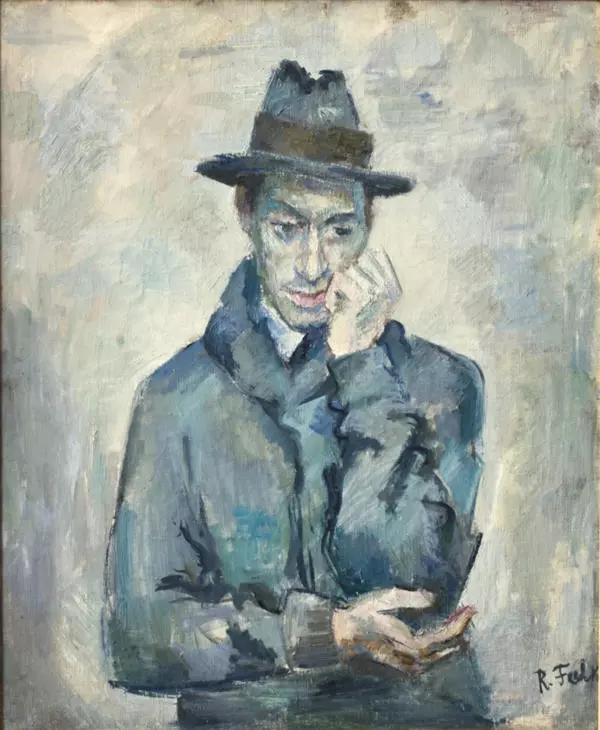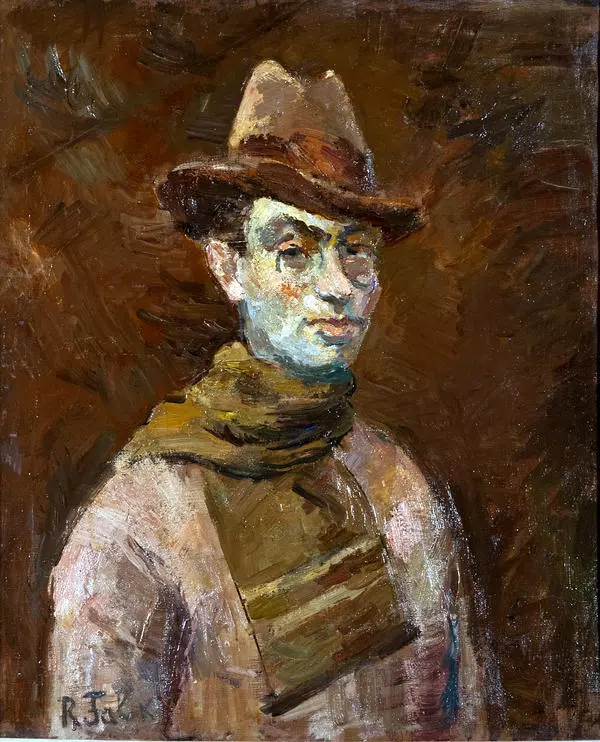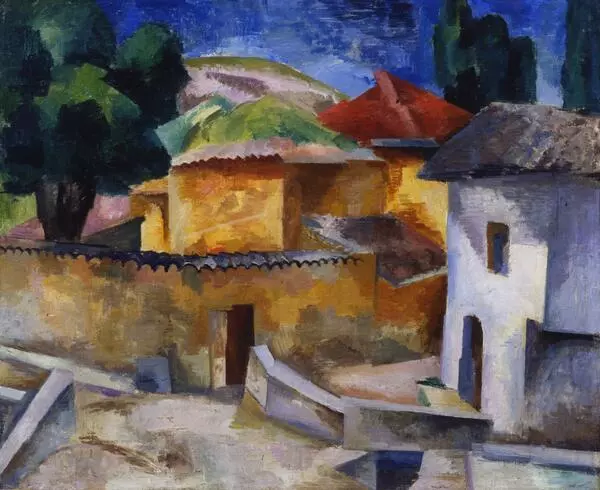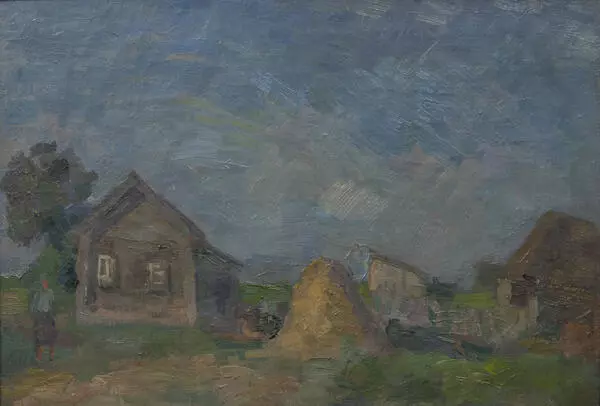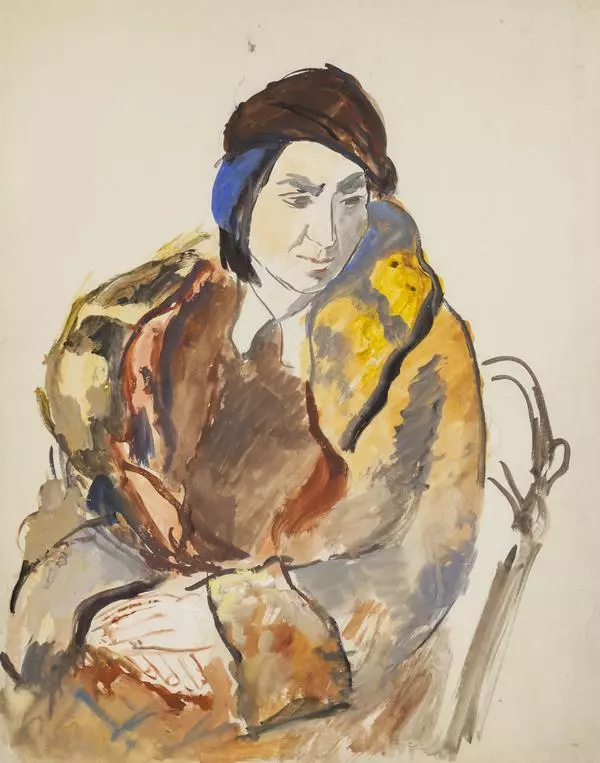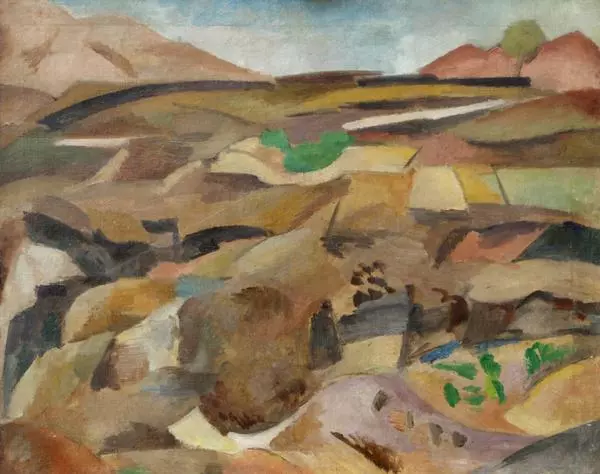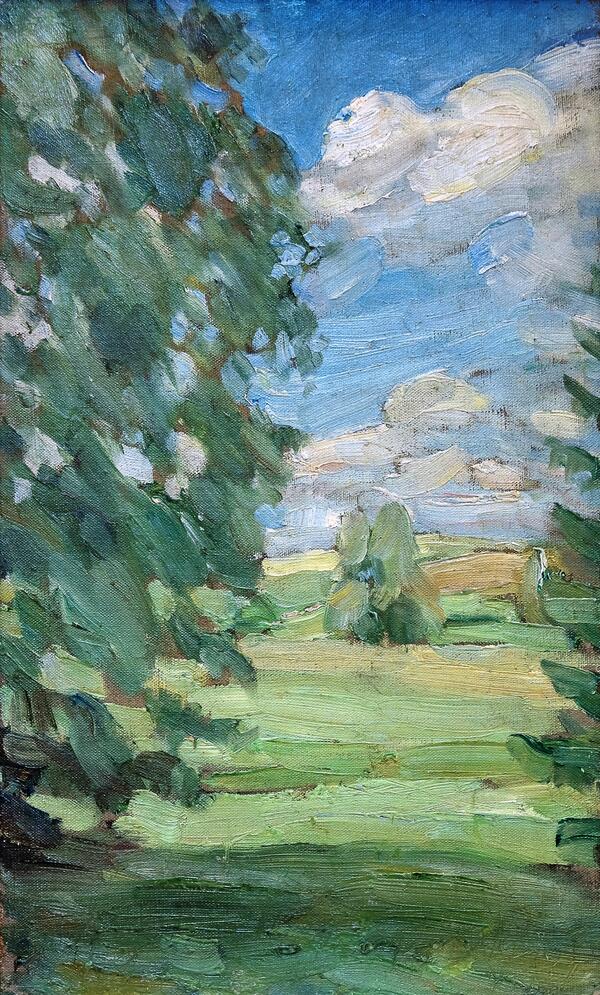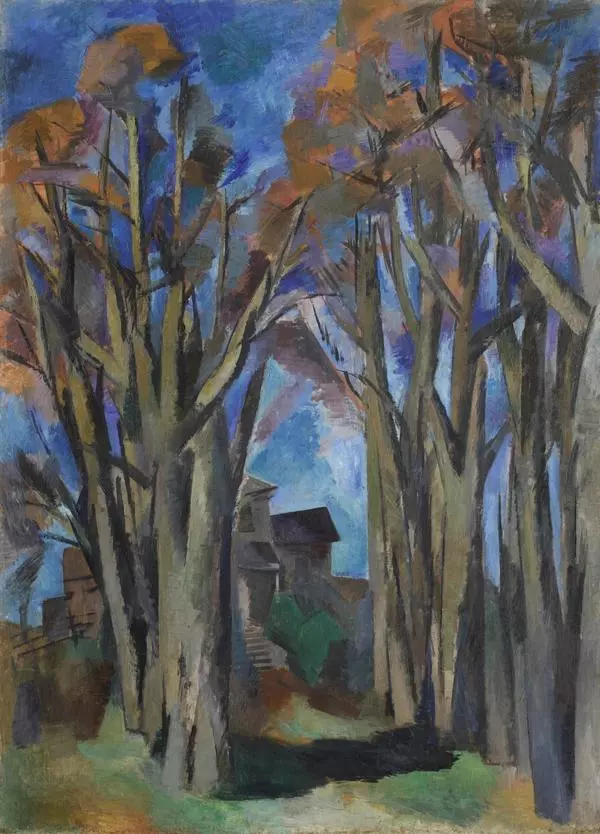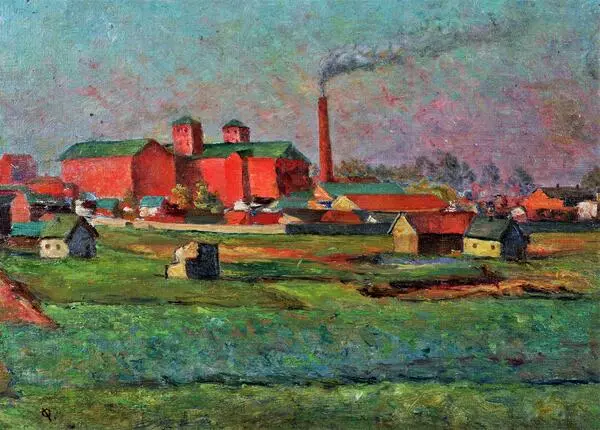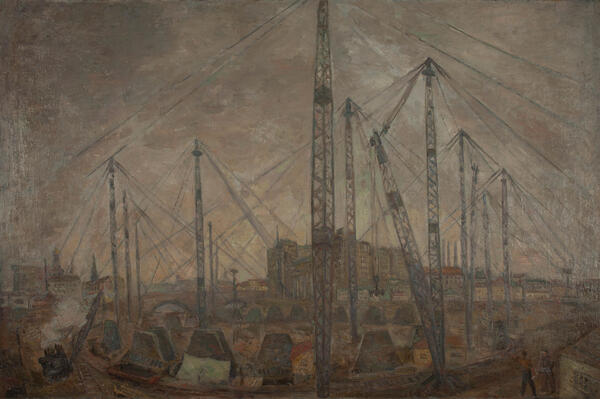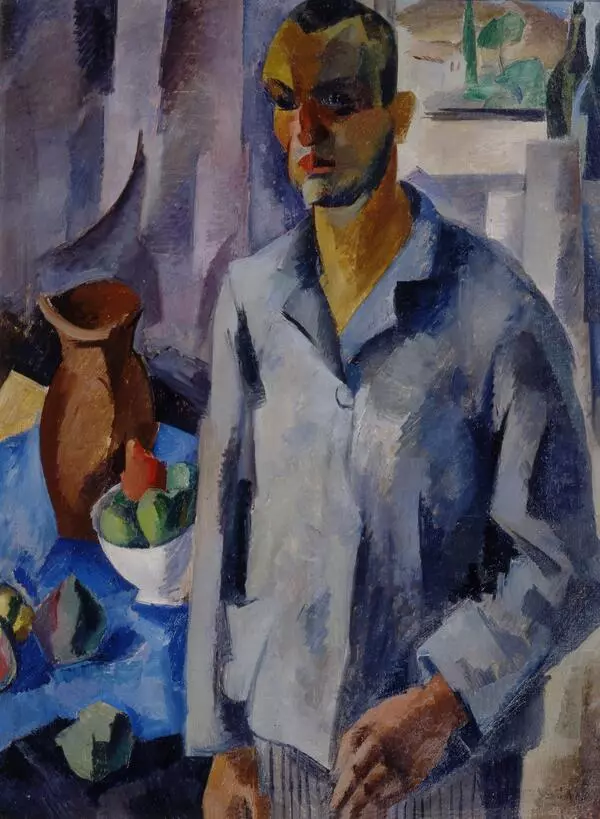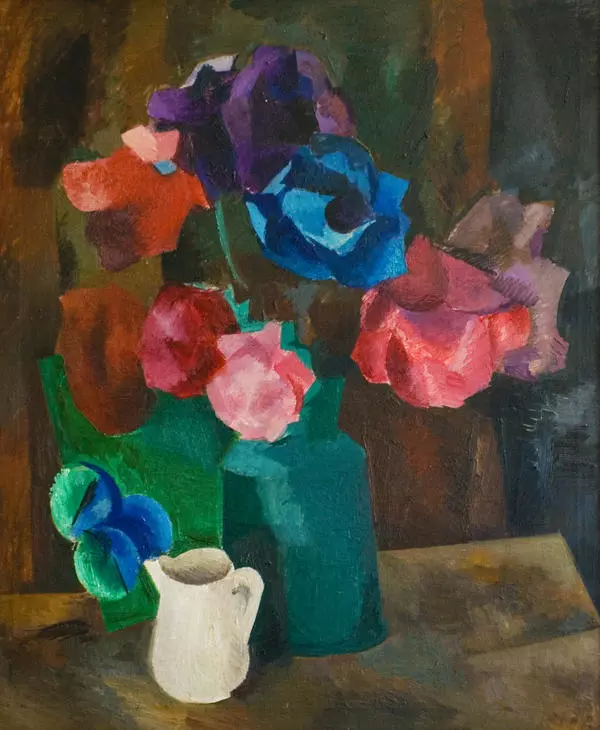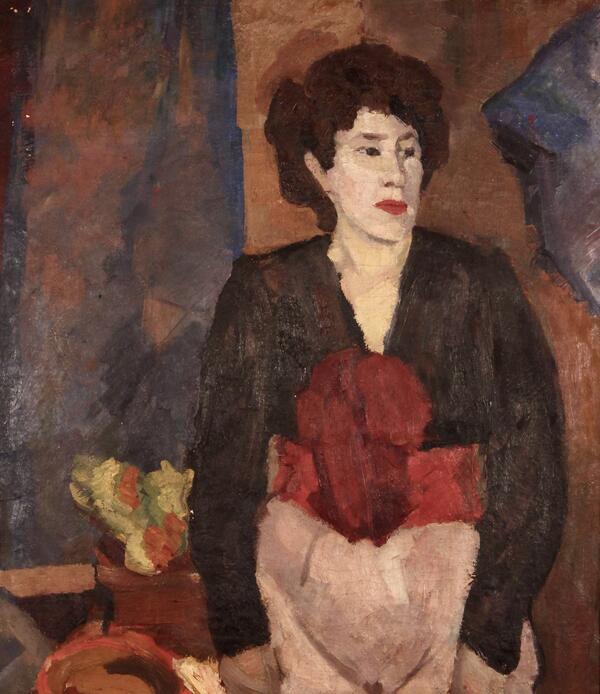Robert Falk took to impressionist art as a student of the Moscow School of Painting, Sculpture, and Architecture. He got training under the tutelage of masters like Valentin Serov and Konstantin Korovin, and the student Falk, as is often the case, was largely influenced by his professors.
In 1910, Falk became one of the youngest members of Jack of Diamonds, an avant-garde art group which rejected both academic and realistic art. Like most of them, Falk took his bearings from the new French painting and stayed under the postimpressionist influence of Paul Cézanne for a long time.
The artist managed to combine avant-garde orientation with lyricism, draw on the ideals of the past, rely on old masters. In parallel with his activity in the Jack of Diamonds, Falk took part in exhibitions of Mir iskusstva (World of Art), an art group uniting champions of Art Nouveau and symbolism aesthetics.
Falk became known both as a painter and a stage designer: he designed the stages of Jewish theatres in Moscow and other cities.
Liza in the Sun is a portrait of the artist’s first wife, Yelizaveta Potekhina, his painting school year-mate, to whom he was married for more than ten years. The picture dates back to Falk’s early period as an artist. It is made in an impressionist spirit, which to many Russian avant-garde painters was a nearly obligatory phase of artistic development. Falk places his model in a tremulous light and air medium produced by clear spectral colours — yellow, green, blue, indigo.
Impressionist painters discovered the cold and warm hue contrast while traditional painting had always used the contrast of the light and dark only. Falk skillfully used that technique combining the warm yellow with the cold blue.
In 1910, Falk became one of the youngest members of Jack of Diamonds, an avant-garde art group which rejected both academic and realistic art. Like most of them, Falk took his bearings from the new French painting and stayed under the postimpressionist influence of Paul Cézanne for a long time.
The artist managed to combine avant-garde orientation with lyricism, draw on the ideals of the past, rely on old masters. In parallel with his activity in the Jack of Diamonds, Falk took part in exhibitions of Mir iskusstva (World of Art), an art group uniting champions of Art Nouveau and symbolism aesthetics.
Falk became known both as a painter and a stage designer: he designed the stages of Jewish theatres in Moscow and other cities.
Liza in the Sun is a portrait of the artist’s first wife, Yelizaveta Potekhina, his painting school year-mate, to whom he was married for more than ten years. The picture dates back to Falk’s early period as an artist. It is made in an impressionist spirit, which to many Russian avant-garde painters was a nearly obligatory phase of artistic development. Falk places his model in a tremulous light and air medium produced by clear spectral colours — yellow, green, blue, indigo.
Impressionist painters discovered the cold and warm hue contrast while traditional painting had always used the contrast of the light and dark only. Falk skillfully used that technique combining the warm yellow with the cold blue.
